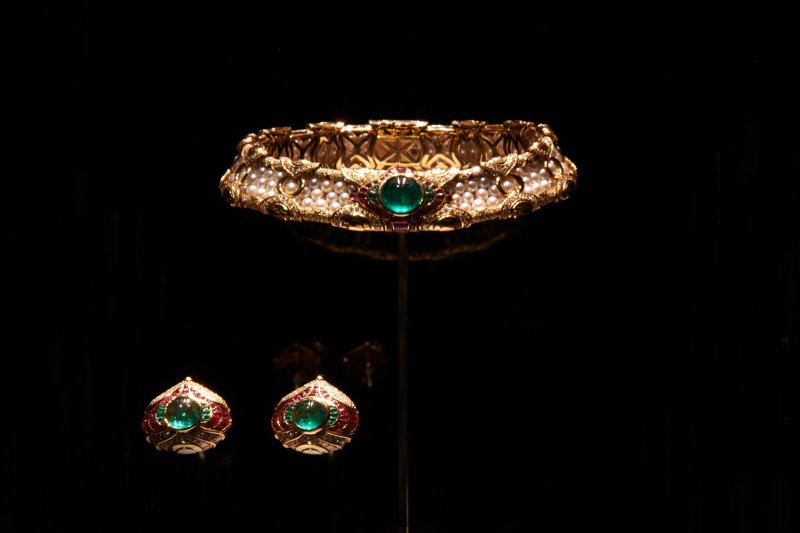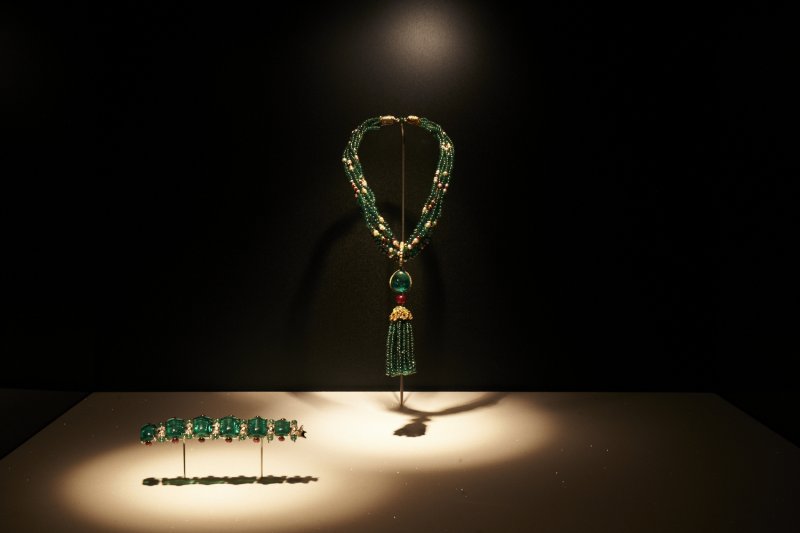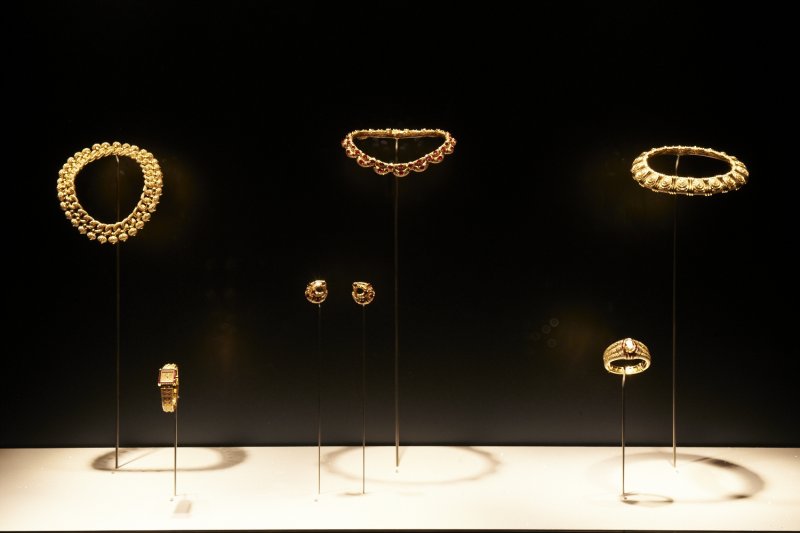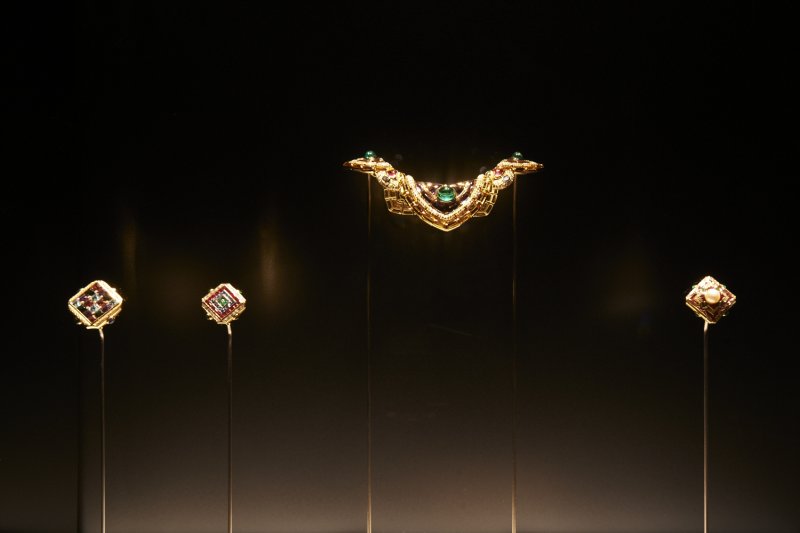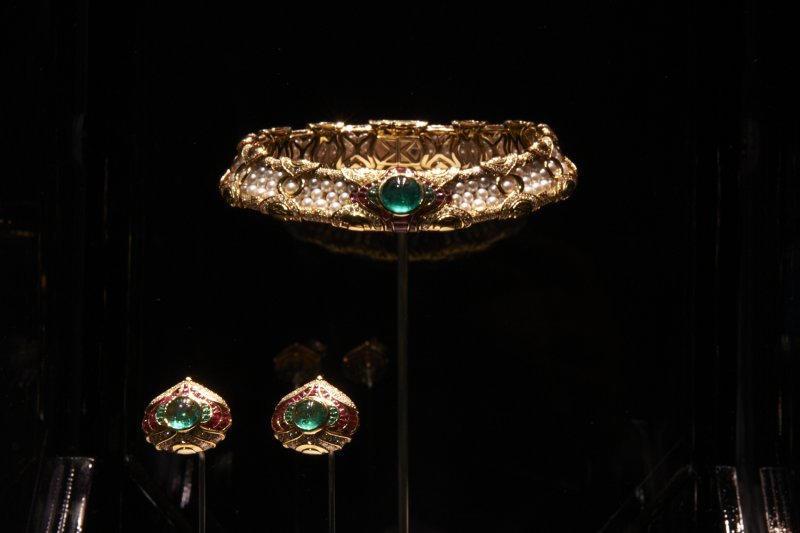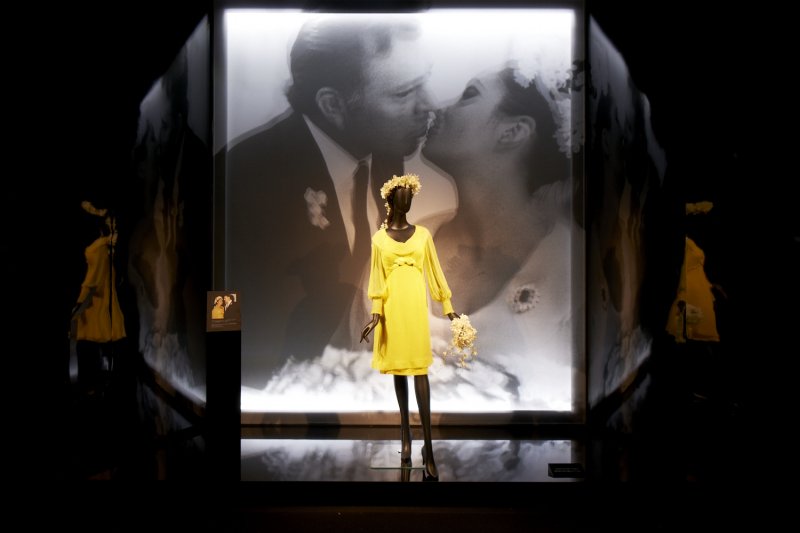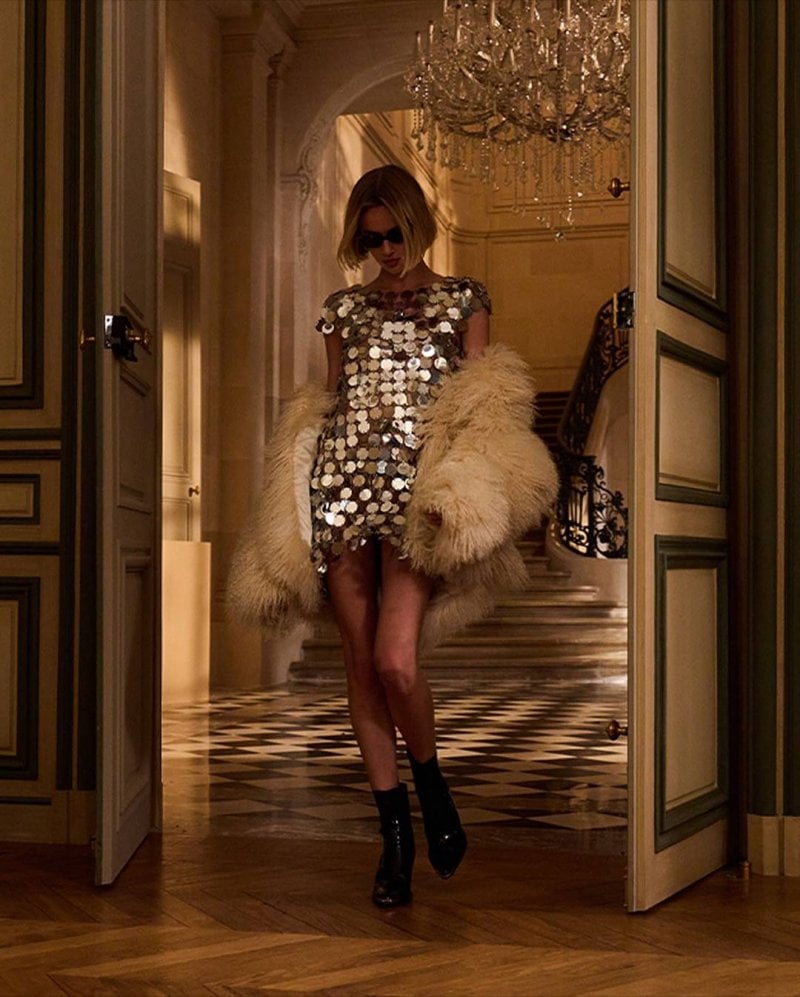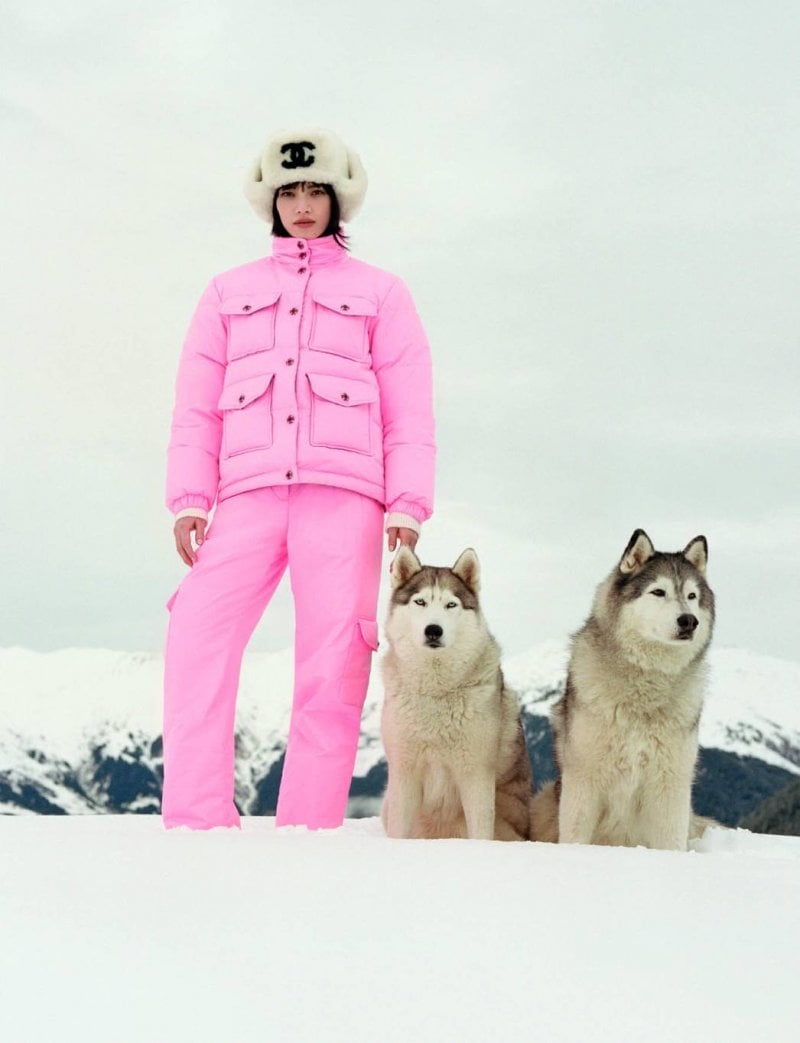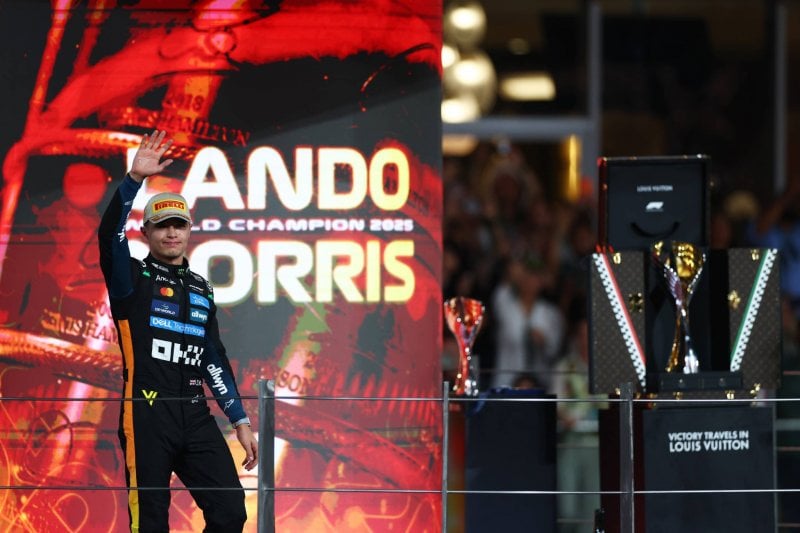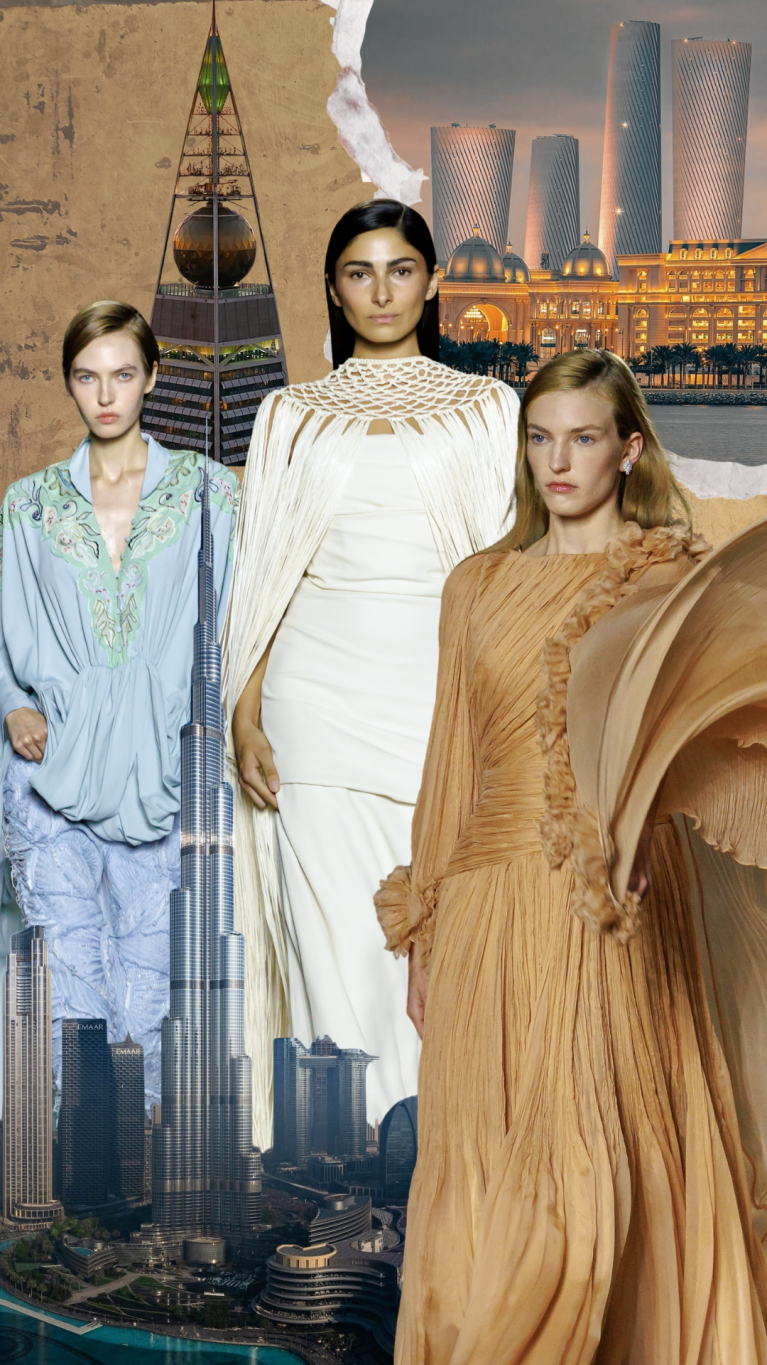While visiting a Bulgari shop was “like visiting the best exhibition of contemporary art” for American artist Andy Warhol, Elizabeth Taylor’s husband Richard Burton used to say that “the only word Elizabeth knows in Italian is Bulgari”. This year, the Italian jewelry house joins forces with the Tokyo National Museum and renowned Yomiuri newspaper to honor 250 jewelry pieces created by Bulgari over four decades in an exhibition entitled ‘The Art of Bulgari: 130 Years of Italian Masterpieces’.
The exclusive exhibition retraces the main chapters in Bulgari’s history, highlighting the creative spirit and the style evolution of the house since the 19th century. The visitor’s journey begins with a collection of silver pieces created by the house’s founder Sotirio Bulgari. Reviving Sotirio’s aesthetic codes, the silver space features pieces inspired by classical, Ottoman and Byzantine styles along with a typical Greek costume from Epirus.
As the artistic journey continues, a space dedicated to “Art Déco” jewelry pieces made of platinum and diamonds from the 20s-40s is unveiled. The piece that stands out in this part of the exhibition is the Trombino ring designed by Giorgio Bulgari, son of Sotirio, as an engagement gift to his wife Leonilde. Recalling the way jewels celebrate special moments and emotional relationships, Bulgari recounts the love story of American actor Tyrone Power and Mexican actress Linda Christian who married in Rome in 1949 and chose their wedding bands from the house’s Candotti boutique. For the occasion of the Tokyo exhibition, the wedding dress of Linda Christian will be on display to complement the setting.
Jewelry pieces from the 50s-60s follow and honor the bold color combinations of gemstones that became a Bulgari trademark. Together with timeless Monete and Serpenti icons, as well as a selection of sophisticated pieces from the 70s, 80s and 90s, the designs complete the house’s creative journey in the world of high-end jewelry.
Among the pieces on display, Bulgari revives a typical convertible necklace in platinum and diamonds from the 30s that can be transformed into bracelets and clips, worn at that time on the lapels of dresses, on hats or on handbags. Another stunning piece showcased at the exhibition is a necklace from the 60s in platinum and diamonds with very large emeralds perfectly matched in color and clarity. An exceptional couple of pear-shaped emeralds is also featured in a pair of earrings from the same era belonging to Italian actress Gina Lollobrigida and bought back by Bulgari in 2013. From the 60s, also comes a necklace featuring emeralds, turquoises and amethysts that embody Bulgari’s signature through color and cut.
Bulgari’s artisanal expertise comes alive in a breathtaking selection of brooches from the 50s and 60s, crafted in a way that allows the flower-head to tremble with the slightest movement. One of the most cherished themes in the world of jewels, flowers reflect Bulgari’s avant-gardist vision through unconventional designs, as seen in brooches from the 70s where petals seem to move in a breeze. The brand’s creativity reminiscent of the 1970’s is also reflected in sautoirs featuring gold chains and large pendants that were perfectly in line with the “maxi” trend of that era, especially in the gold Indian-inspired piece adorned with emeralds, rubies and diamonds.
In order to highlight the Far-East’s influence in Bulgari’s designs, the house features for the first time ever a selection of bold jewelry that pays tribute to Japan. A brooch from the ‘Heritage’ collection reproducing Mount Fuji with mother-of-pearl, polychrome enamel and diamonds, as well as a sautoir with a “Buddha” pendant, will be on display. Evoking fine Japanese lacquerware, jewels featuring green jade and lotus flower motifs will be showcased in addition to creations that combine onyx and warm coral. Jewelry pieces featuring asymmetrical flower pattern are inspired by the ancient textile art of Japanese kimonos, traditionally sewn and hand-embroidered luxury dresses worn on special occasions. The fan-shape of the Diva pendant honors Japan, as it recalls the leaf of Ginkgo, one of the country’s favorite trees symbolizing strength and longevity.
With such an exhibition, Bulgari’s muse Elizabeth Taylor undoubtedly plays a quintessential part. The journey ends with a selection of jewelry from her personal Bulgari collection bought back in 2011 and showcased in an innovative setting featuring original costumes the actress wore on the ‘Cleopatra’ movie set and the wedding dress she wore when she married Richard Burton in 1964. Honoring their love story that first blossomed in Rome, the actress’ engagement ring set with a 7.40-carat emerald and 12 pear-shaped diamonds will be on display. The gem was auctioned off in 2002 to raise funds for “The Elizabeth Taylor AIDS Foundation”, yet it will return to be showcased along with other jewelry pieces that highlight the eternal nature of love and Taylor’s long-lasting passion for Bulgari jewelry.
Mirella Haddad






